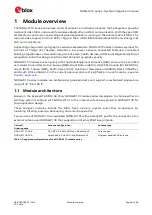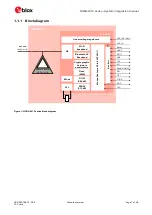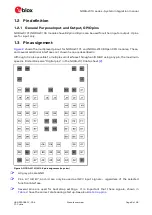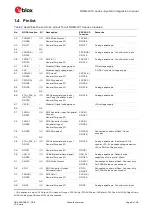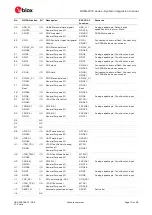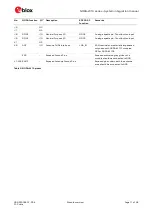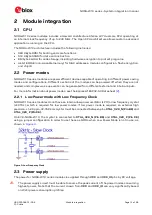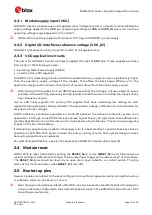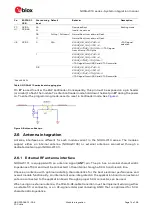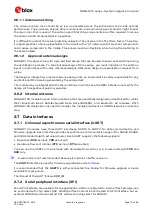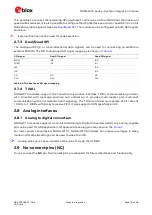
NORA-W10 series - System integration manual
UBX-22005601 - R04
Design-in
Page 20 of 56
C1-Public
o
RF trace length must be minimized to reduce dielectric losses.
o
If traces longer than few centimeters are needed, it is recommended to use a coaxial connector
and cable to reduce losses
o
Stack-up should allow for thick 50
traces and at least 200 µm trace width is recommended
to assure good impedance control over the PCB manufacturing process.
o
FR-4 material exhibits poor thickness stability and thus less control of impedance over the
trace length. Contact the PCB manufacturer for specific tolerance of controlled impedance
traces.
•
The width of the transmission lines and spacing to GND must be uniform and routed as smoothly
as possible: route RF lines in 45 °C angle or in arcs.
•
Add GND stitching vias around transmission lines.
•
Ensure solid metal connection of the adjacent metal layer on the PCB stack-up to main ground
layer, providing enough vias on the adjacent metal layer.
•
Route RF transmission lines far from any noise source (as switching supplies and digital lines) and
from any sensitive circuit to avoid crosstalk between RF traces and Hi-impedance or analog
signals.
•
Avoid stubs on the transmission lines, any component on the transmission line should be placed
with the connected pad over the trace. Also avoid any unnecessary component on RF traces.
3.2.2
Antenna design (NORA-W101)
NORA-W101 is suited for designs when an external antenna is needed due to mechanical integration
or placement of the module.
Designers must take care of the antennas from all perspective at the beginning of the design phase
when the physical dimensions of the application board are under analysis/decision, as the RF
compliance of the device integrating NORA-W101 module with all the applicable required certification
schemes heavily depends on the radiating performance of the antennas. The designer is encouraged
to consider one of the u-blox suggested antenna part numbers and follow the layout requirements.
•
External antennas such as linear monopole:
o
External antennas basically do not imply physical restriction to the design of the PCB where
the module is mounted.
o
The radiation performance mainly depends on the antennas. It is required to select antennas
with optimal radiating performance in the operating bands.
o
RF cables should carefully be selected with minimum insertion losses. Additional insertion loss
will be introduced by low quality or long cable. Large insertion loss reduces radiation
performance.
o
A high quality 50
coaxial connector provides proper PCB-to-RF-cable transition.

